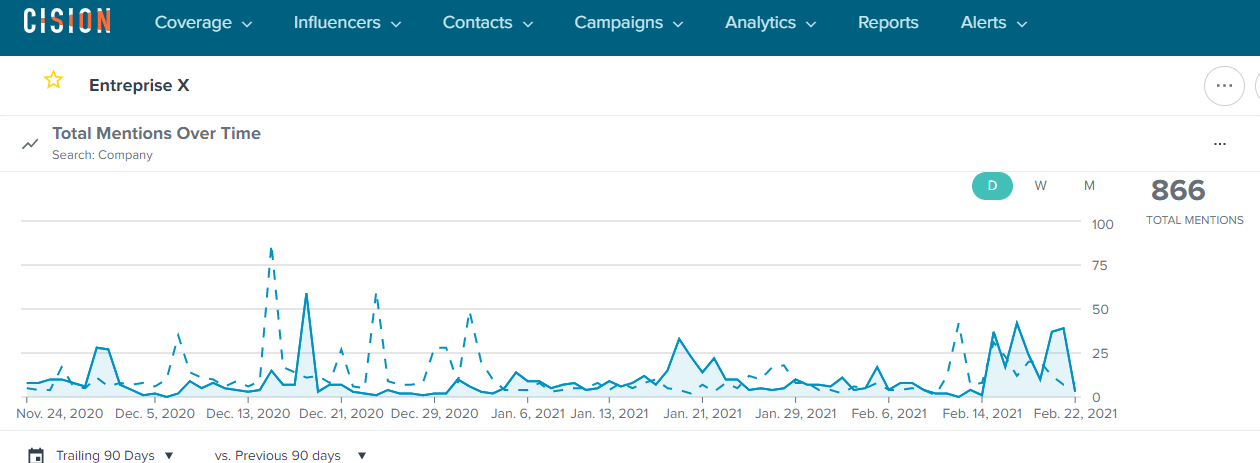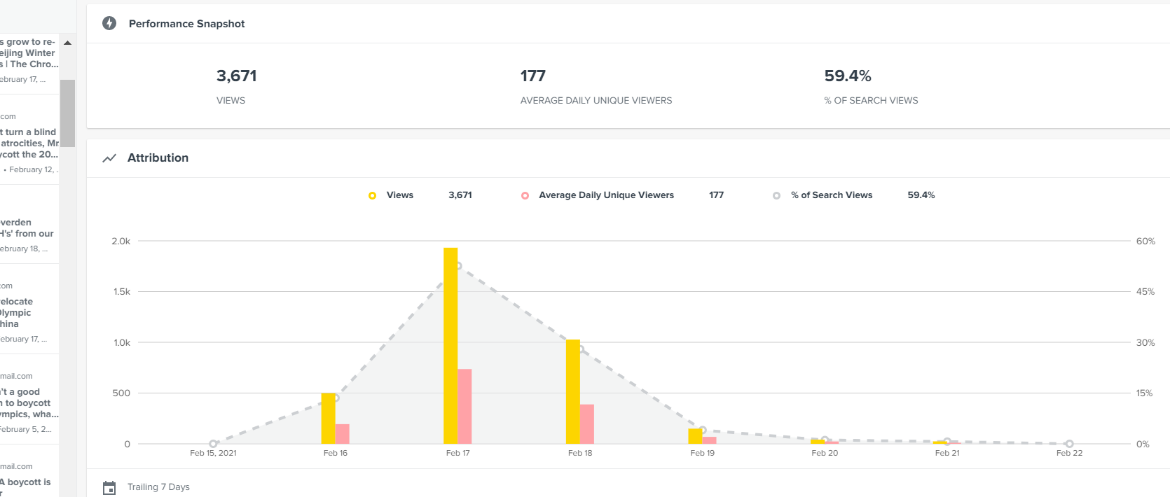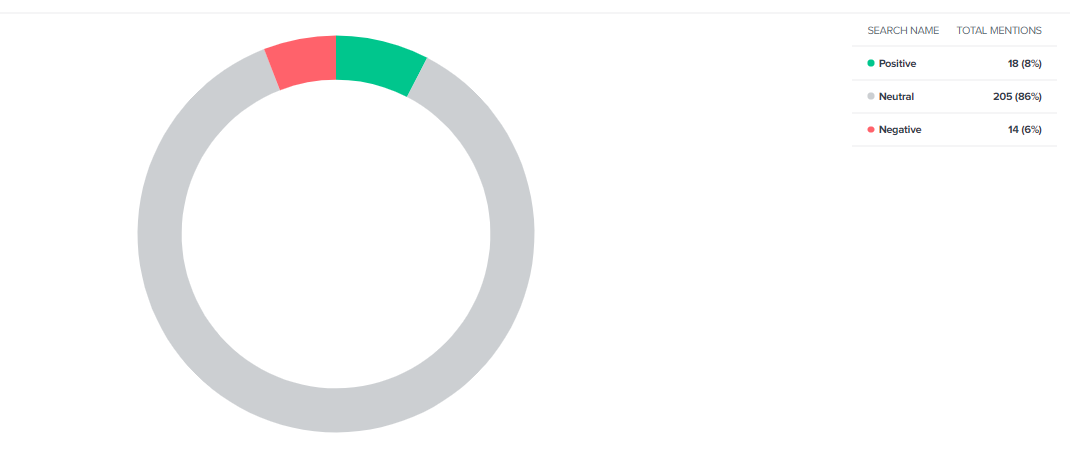While PR and communications professionals have long relied on metrics like “Reach” and Advertising Value Equivalency (AVE) to measure the success of their outreach efforts, many of these “traditional” metrics only tell part of the story. Today, executives rely on PR and comms teams to provide strategic direction and guidance. Finding measurable and comparable key performance indicators (KPIs) over time that reflect the work invested and the impact of that work is a central concern for PR professionals.
So, what are the alternatives? Fortunately, thanks to recent technological advances, there are a variety of media monitoring tools that eliminate the tedious job of manual clipping and automatically track brand mentions, media coverage and countless other metrics for you. Even then, however, it is hard to pinpoint which metrics are the most important to measure.
To make it easy for you (and using Cision’s media monitoring dashboard as a guide), we’ve outlined five metrics that every communication professional should include in their performance reports.
1. Number of Earned Media Mentions
Once very difficult to calculate in practice, your organization's earned media mentions are easier than ever to track, thanks to today’s monitoring platforms. As you’ll see in the graph below, now all you have to do is set the right keywords to obtain a graph that shows the number of times your organization has been mentioned or quoted on online, broadcast, print, social or even podcasts.

Earned Media Mentions are a measurable and comparable metric over time (we can compare the results of different campaigns), and it highlights the PR team's job of securing message positioning across media.
2. Spokespeople Quotation Percentage
Knowing the percentage of quotes attributed to your spokespeople is an indicator of your message's clarity and predominance in press coverage. Quotes are an amplifier of your message, reducing any misinterpretation. It also humanizes the message and gives visibility to your leaders. This metric is measurable and comparable over time.
3. Percentage of Media Coverage by Type of Media
This is a key indicator to measure the relevance of media channels. It is up to each organization to decide which media channels they favor, according to their target audience and personas, and the messages they want to communicate to those audiences. Demographic and filmographic traits can change from one channel or media outlet to another.

Again, this is a measurable metric that will allow organizations to understand the most effective media channels and it is comparable over time. It also highlights the communicator's knowledge of the sociocultural environment.
4. Real Online Earned Audience
Is it possible? Yes. Using the same measurement capabilities of digital marketing, we can now identify the actual number of readers of your online articles. Cision Impact makes it possible to count the number of unique users that are reading earned media mentioning your organization.

This provides a more accurate view of engagements compared to “Reach” or “Readership” metrics like UVPM (unique visitors per month), which only shows the website's total visitors in a given month, not how many people read a specific article.
5. Sentiment
When measured correctly, sentiment is a powerful reputation management metric that can be measured on a regular basis. Its frequent comparison also gives you insight into the health of your organization's image. After all, communications professionals are the guardians of reputation, aren't they? Don’t forget: human verification is highly recommended, as nuance and context are not always perfectly interpreted by AI.
Fortunately for communications professionals, there are a wide variety of media monitoring and measurement tools out there; however, they are not all created equal. While free tools are fine to use, they may not show the bigger pictures. Consider investing in a partner with the technology and expertise to help you meet your organization’s unique goals.







